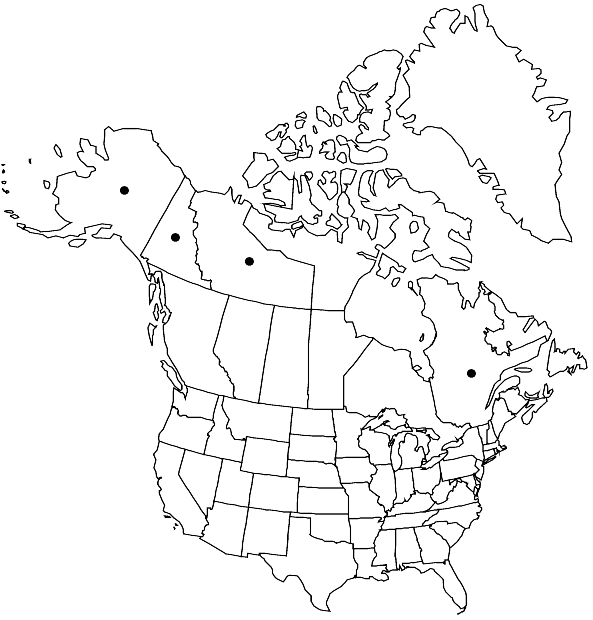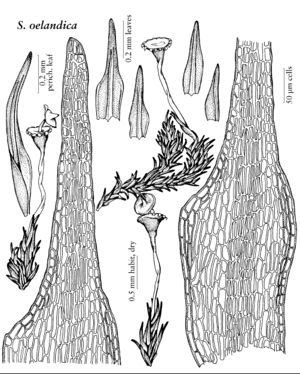Seligeria oelandica
Bot. Not. 1929: 42, fig. 1. 1929,.
Plants small, dark-brown to blackish. Leaves lanceolate, stoutly subulate from oblong base, narrowly obtuse; costa ending in apex, filling subula; margins entire; leaf cells (1–) 2: 1; perichaetial leaves somewhat larger, similar to vegetative leaves, not much differentiated. Seta 0.8–1.2 mm, straight to slightly curved, stout. Capsule hemispheric-obovate to turbinate and flaring at mouth when old; peristome reduced to 16, short, blunt teeth; columella exserted. Spores (20–) 23–28 (–30) µm.
Habitat: Calcareous substrates
Distribution

N.W.T., Que., Yukon, Alaska, Europe
Discussion
Seligeria oelandica is rare and disjunctive, known only from a few stations in eastern Quebec and from several localities in Alaska, Northwest Territories, and the Yukon. It is distinguished from its closest relative, S. tristichoides, by the branched turf-forming habit, twisted-curved leaves, pronounced turbinate capsules, larger spores, and reduced peristome. The spores are the largest in the genus; that and the persistent columella distinguish this species from all others.
Selected References
None.
